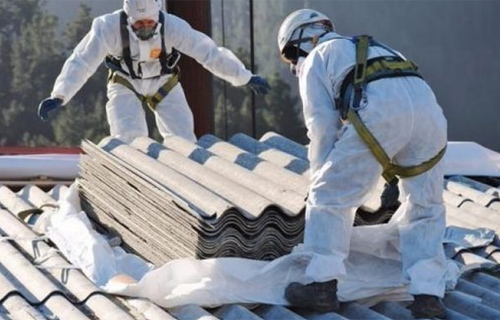When Should You Remove Asbestos Products from Your Home?

A lot of people are unaware of the fact that asbestos exposure can happen almost anywhere, including at home. In fact, asbestos can be found in a lot of places that are considered safe, like public buildings or schools. Thanks to its durability and resistance to heat, the toxic mineral was widely used in the construction industry for a variety of building materials, some of the most common being insulation, cement, as well as roofing and flooring tiles.
Most importantly, asbestos exposure can cause many serious diseases, which include lung cancer, asbestosis, and various forms of mesothelioma. Therefore, it is essential for people to know how to avoid being exposed to asbestos, at least in the comfort of their own homes.
One thing that we recommend when it comes to preventing exposure is to avoid DIY removal of asbestos-containing materials and performing renovation when such products are in your house. If you suspect that certain materials which contain asbestos need to be removed, it is advisable to contact a professional company to help you out.
Products to consider removing from your home
There are two types of asbestos-containing products that usually need removal:
- Friable materials. These are materials which can be easily broken by hand and turned into powder. Friable asbestos products may be found in pipes and boilers. When damaged, friable materials might release dangerous levels of asbestos in the air and put people at risk of developing serious diseases.
- Products in poor condition. All asbestos-containing products can be threatening to people's health if they are old and damaged. When materials which contain this toxic mineral are in poor condition and disturbed, they release asbestos fibers, which become airborne and can easily be inhaled.
Consequently, it is extremely important to have these products removed in a safe way in order to avoid hazardous exposure to asbestos.
Removal alternatives
When removal is not really necessary, encapsulating the problematic asbestos-containing products might be a perfect choice. It is a less complicated and cheaper method which consists in applying a protective layer of paint or sealant on the surface of the material and which also involves a minimal risk, unlike the process of complete removal.
Moreover, as roofs are one of the areas where asbestos is frequently present, opting for encapsulation would eliminate the big problem of material disposal and the risk of a hazardous disturbance of the asbestos fibers in it.
The paint or sealant used for encapsulation is made of polyurea and provides several benefits:
- Increases the lifespan of the material
- Seals and repairs broken asbestos-containing products, even in places which are hard to reach
- Ensures high protection against cracks and scratches
- Significantly reduces the release of asbestos fibers
- Improves the aspect of the product
What to avoid
When asbestos-containing products are non-friable and in good condition, they do not necessarily require removal. The risk of exposure is very low and it is better to leave them undisturbed. Moreover, remodeling asbestos products and performing home renovation on your own when asbestos products are in your house should be avoided. This would only damage the troublesome materials and put you and others at risk of developing serious health problems.
